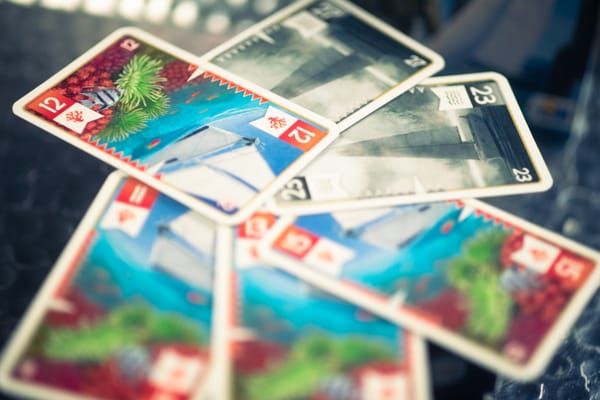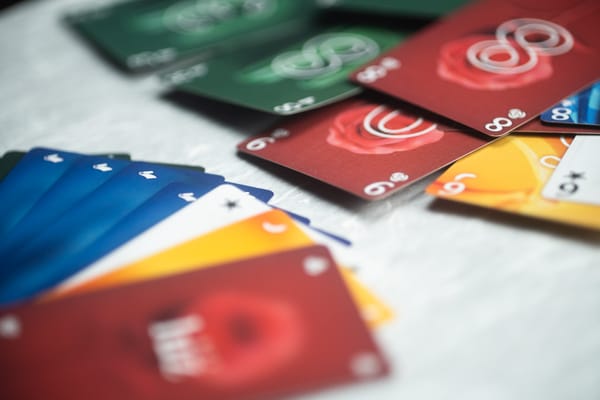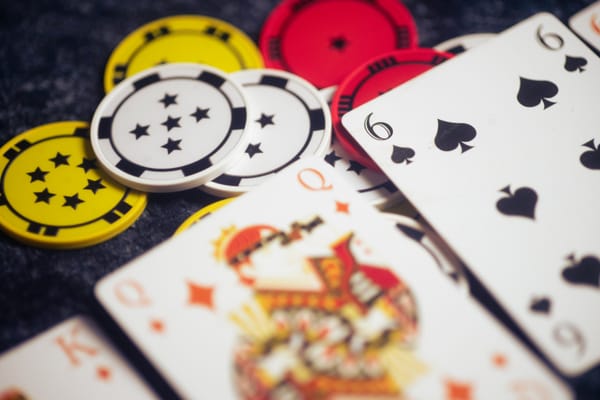Six classic board games still worth your time
The board game renaissance is still underway, but it really got started in the 1990s.
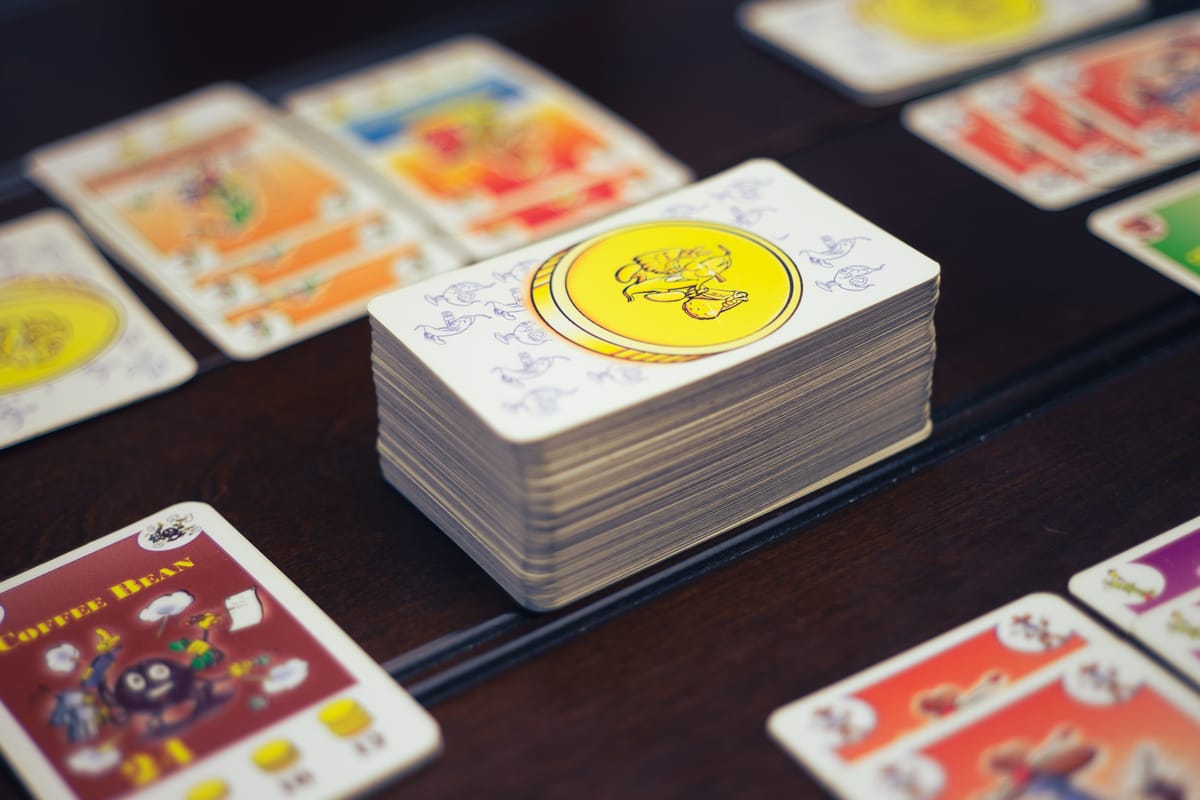
I often find myself looking toward the past here, and not just because you can’t really discuss games that haven’t yet been designed. No, I like to look at the past because there are many great games in the halls of board game history, and ignoring them is only to our detriment. I love a new release as much as anybody, as you well know. I need reminders sometimes, too, and this is a great way to give myself one.
These six games have, to this point, held up to the test of time. While I could talk for a long time about some more traditional games, I’d like to turn my focus to games that fit a specific set of criteria. The game must be published by a known designer or group of designers; it be must be published before the year 2000; and it must still be available today. For the sake of variety, I’ll also restrict this to a single game per designer, but I’ll note some of their other pre-2000 games as well.
A few honorable mentions before we get to the topic at hand:
- Löwenherz (Teuber, 1997), later reimplemented as Domaine (2003), is an area control game with some interesting negotiation elements. It’s just not available new these days.
- Chinatown (Hartwig, 1999), is a fantastic investment and negotiation game, but it’s out of print. The reimplementation Waterfall Park (Hartwig, 2023) should be easy enough to find, though.
- The Bottle Imp (Cornett, 1995) is a reasonably good trick-taker, but it’s just not better than the other six games here.
Survive: Escape from Atlantis!
Survive: Escape from Atlantis! (Courtland-Smith, 1982) sees players trying to escape from a sinking island, but the shark-infested waters are always looking to disrupt the journey to shore. You’ll be transporting 10 figures back to land, with points rankings hidden on each one’s underside. If you successfully make it to shore, whether by swimming or by boat, great! You’ll get those points. Everyone’s out to get you, so you’ll have to figure out how to obfuscate the points values.
Survive holds up because the premise is fairly simple: Get to shore, sink your opponents. There’s plenty of opportunity for betrayal; maybe you’re on a boat together in a makeshift alliance, and they suddenly steer into trouble, leaving your high-value figure on the boat with their low-value figure.
Escape from Atlantis has been reimplemented a few times, most recently as Survive the Island (2024), and Julian Courtland-Smith, the designer, is still active on Board Game Geek. It’s a pretty neat world we live in sometimes.
Designed by Julian Courtland-Smith, most recently published in the U.S. by Stronghold Games.

Can’t Stop
Can’t Stop (Sackson, 1980) is a push-your-luck game that’s every bit as good as any more recent game in its genre; it’s a tightly designed game with no fluff. The premise is simple: Each player is trying to be the first to reach the apex of three tracks, the totality of which range from 2 to 12. On a player’s turn, they will roll four dice, form two pairs from those, then advance up a maximum of two tracks. You can then optionally roll again, but there’s a big consideration to make: You can only advance on three tracks on your turn, and if you ever roll and cannot advance with any combination of dice, you’re done for, and your turn ends, losing any progress you’ve made. Further, once a player has reached the end of a track, it’s no longer available as an option for movement.
Can’t Stop is, to my mind, Sid Sackson’s greatest. He designed many, including two (Sleuth and Acquire) I’ll mention in a moment, but this one is among the greatest games ever designed. Every turn is riveting; you’re always wondering if your opponents will crash out with some unlucky rolls, if you’ll be able to pull off a huge comeback, that sort of thing.
Designed by Sid Sackson, published in the U.S. currently by Eagle Gryphon Games.
Two more classics from Sid Sackson are the deduction game Sleuth (1971) and the property investment game Acquire (1964). I’m also interested in playing the climbing game Monad (1968), which fits really neatly into my interests.
Tichu
I wrote recently about my love of Haggis (Ross, 2010), a climbing-shedding game with its roots in a classic climbing game, Tichu (Hostettler, 1991). Tichu is a partnership climbing game in which you’re trying to be the first team to have both members shed their hands. It features two types of bombs you can play: four of a kind and a five-card straight flush. As with all great climbing games with deeper tactics and strategy, you’ll want to be careful about when you use those bombs, when you play your big combinations, and when you strategically pass.
Additionally, there are four cards that are a bit special. The player with the Mah Jong starts, and when the card is played, the player can make a ‘wish,’ asking for a card to be played — though it’s not a request, it’s a demand, and it must be played; the Dog passes play to your teammate; the Phoenix is marginally higher than the card it’s played after (and thus can be played ahead of the highest-value ace); and the Dragon is played only as a single card, but it’s the highest card possible in the game.
Finally, before you play a card, you may call Tichu, indicating you think you’ll be the first player to shed your hand, and before all the cards are dealt, you can call Grand Tichu — which is the same thing, but it’s worth more points. Tichu is a tremendous game, and quite a community has been built around it. It’s inspired countless other games, and I suspect it’ll continue to do so.
Designed by Urs Hostettler, illustrated most recently in the U.S. by Res Brandenberger, and published by ABACUSSPIELE.
Hostettler also designed the well-regarded trick-taker Cosmic Eidex (1998), a three-player game where each player has special powers.
Take 5 / 6 nimmt!
Pushing your luck in games remains an ever-present theme for me. I love the idea that you can make decisions and weigh them against other players’ perceived decision-making, and I love it even more when those players get in the way. Take 5 (1994), known perhaps better in board game circles by its German name, 6 nimmt!, is a game where you’re playing numbered cards to rows. It’s really that simple. On your turn, you’ll select a card from your hand, and when it’s your turn to play the card, you figure out where to play it by finding the closest number in a row to form an ascending group of cards.
And really, that’s the gist of the game, except that if you ever can’t play your card, you’ll have to clear a row to place yours, and that row will be worth negative points. And if you ever would place in a row that already has five cards, you’ll take those cards and start a new row. It’s beautiful. It’s chaotic. It’ll make you sweat, and it’ll make you swear. Probably at the same time. This is a brilliant family game, and you’ll find yourself rooting against your family constantly. It’s a complicated thing.
Designed by Wolfgang Kramer, typically illustrated by Franz Vohwinkel, and published by AMIGO.
Wolfgang Kramer also designed the great Euro games El Grande (1995), Torres (1999) and Tikal (1999), among many others. He’s typically best-known for his collaborations, often with Michael Kiesling.
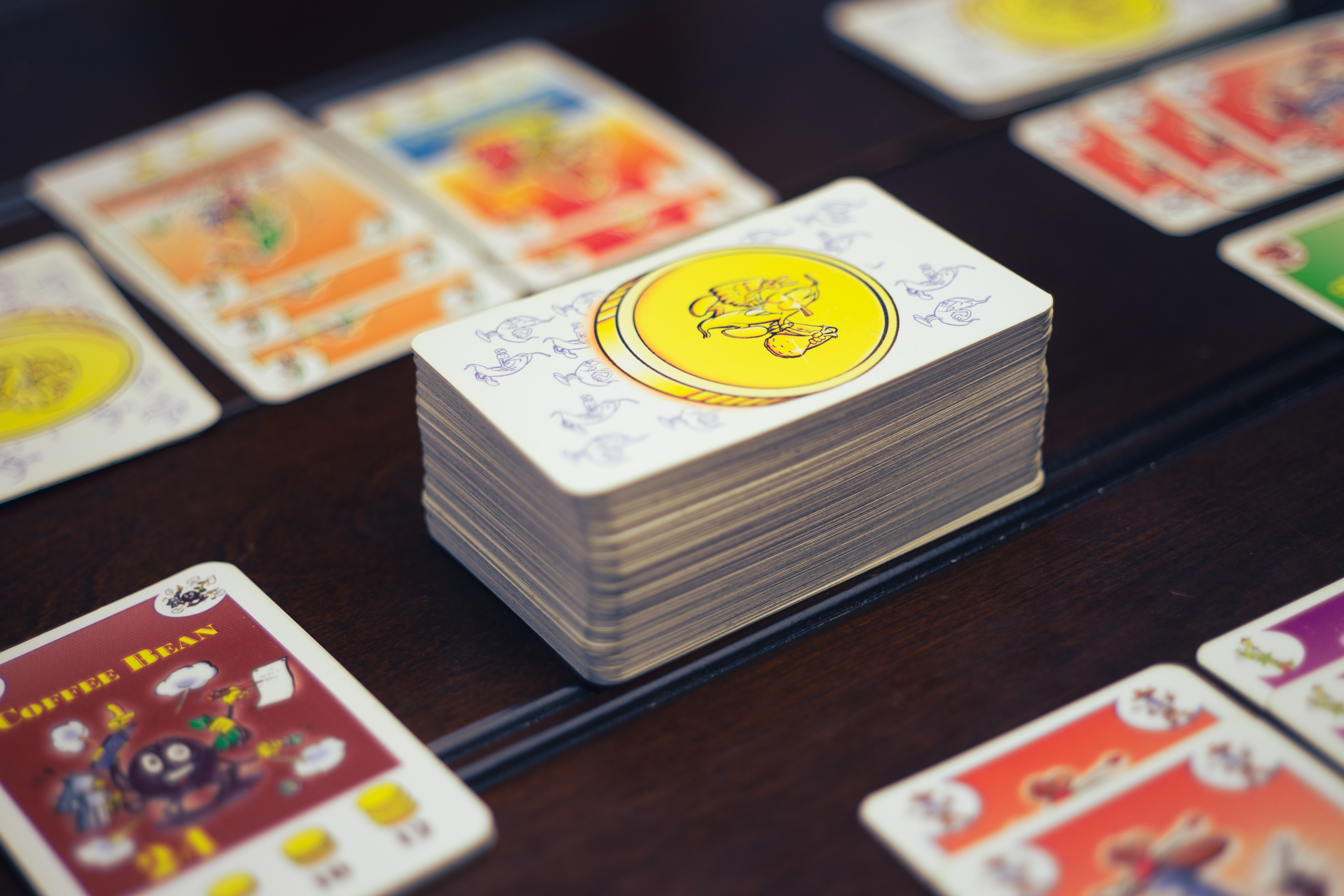
Bohnanza
Uwe Rosenberg is definitively one of the 21st century’s greatest board game designers, but he holds a special place in the 20th, too. The man behind Agricola (2007) and Patchwork (2014) is one of the industry’s great innovators, but before he staked that claim, he started his career with one of the great card games, Bohnanza (Rosenberg, 1997), which you almost certainly know. It’s the one you describe to your friends as “the bean trading game,” which is both entirely accurate and a great illustration as to the diverse themes of modern board games.
This is both a set collection game and a negotiation game. You’re planting beans in one of two fields (potentially three), but you can only ever plant identically typed beans together. You plant them by playing at least one (optionally two) cards from the front of your hand at the start of your turn. If you can’t plant, you’ll have to make room in one of your fields by selling the beans for gold. On each of your turns, you’ll have an opportunity to negotiate and trade away the cards in your hand, which is both exceedingly useful and an opportunity to create a real problem for yourself. There’s a reason Bohnanza is a legend among modern board games, even if the beans, iconic as they are, could use a visual refresh.
Designed by Uwe Rosenberg, illustrated by Björn Pertoft, and published by AMIGO.
Rosenberg’s pre-2000 games also includes a nice trick-taker, Bargain Hunter (1998), which features a theme that is either about yard sales or picking up the garbage your neighbors are throwing away. It’s a cool one!
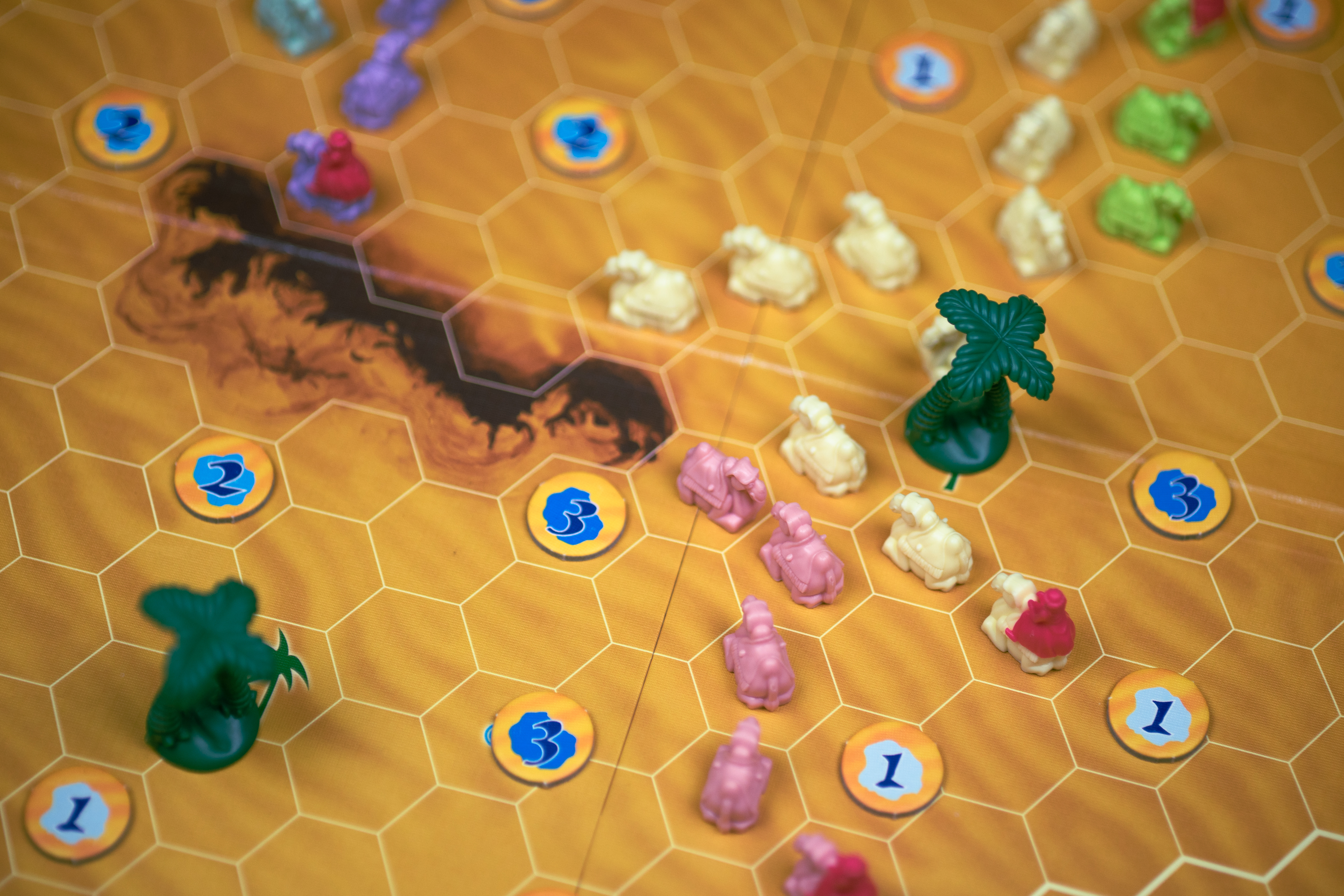
Through the Desert
We weren’t going to get through this without a Reiner Knizia game, you know. If you’re looking at great designer board games in the 20th century, you have to look squarely at Knizia’s catalog. I’ve picked Through the Desert (1998) here simply because I like it. It’s a nice take on area control, and it manages to feel like an old abstract game and a fresh new game at the same time, and that’s even with it being first published 26 years ago. There’s something really pleasing about this game. Trapping your opponents’ camels so they can’t move is as satisfying as enclosing a large area on the board.
Knizia designed a slew of games in the 1990s that hold up well. Whether it’s the masterful auction game Modern Art (1992), the two-player press-your-luck Lost Cities (1999), the two-player tactical battler Schotten Totten (1999), the yet-another-auction-game Ra (1999), or the yet another-another auction game High Society (1995) — all of which are very well-regarded — it’s clear that Knizia played a huge role in the development of modern board games.
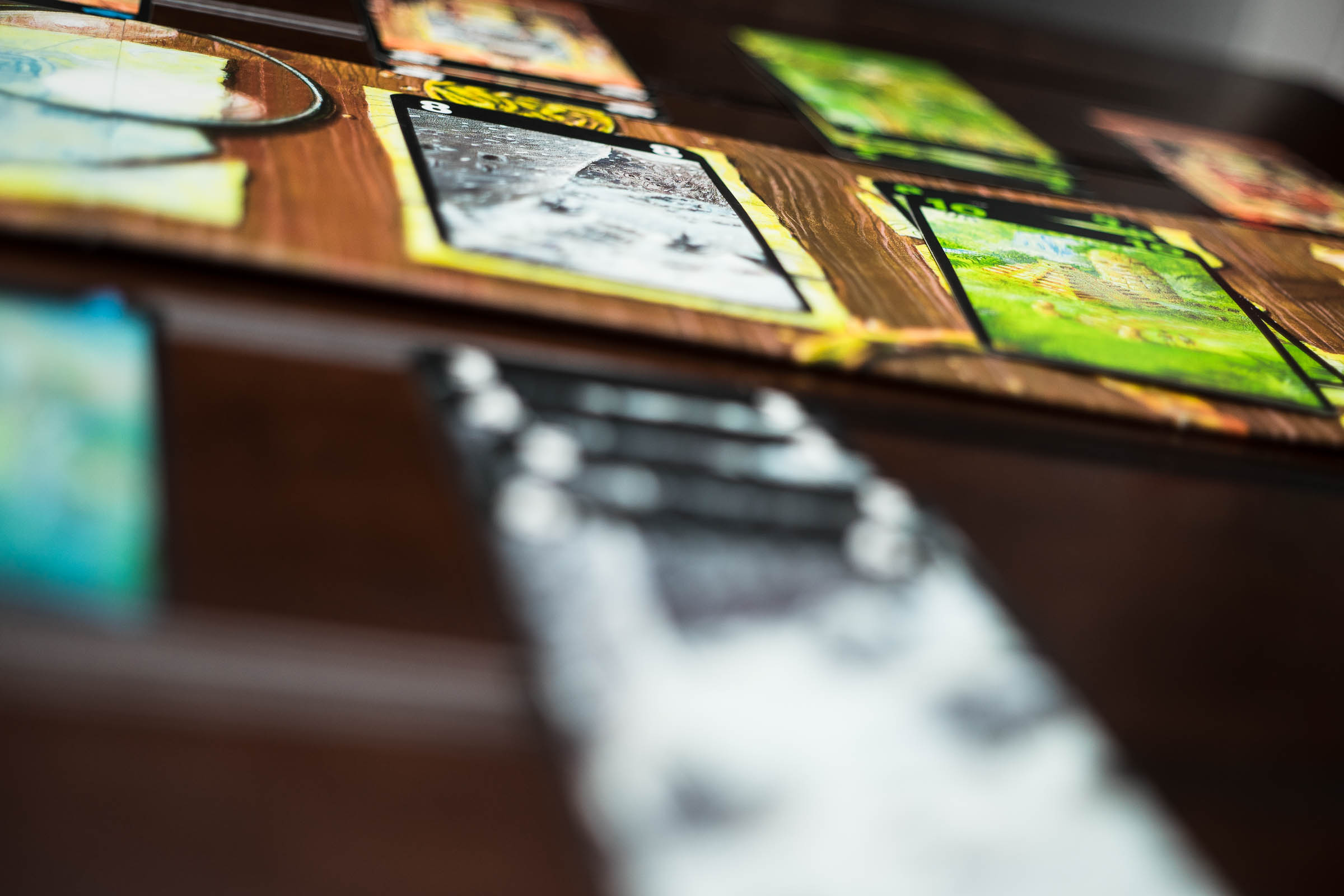
There are so many more games that could fit the bill here, but I’m going to pause here — not because I can’t think of more, but because I can think of too many. Maybe I’ll use this as a springboard to replay some of the great games I’ve only barely mentioned here, as well as the ones I haven’t mentioned at all. For Sale? Count me in. El Grande? I really do need to play that one finally. Ra? Yes, please!
At any rate, I’m back from vacation and feeling as refreshed as a toddler boy dad can ever reliably feel. It was nice to spend some time relaxing at the beach reading about six pages of a book before drifting off, and now I’m home for a bit until TTUTCON 2025.
By the way, if you’re in Utah (or interested in traveling to Utah), TTUTCON is coming up very soon — August 8 and 9. It’s a great opportunity to play a ton of trick-taking games with folks, and I had a really lovely time last year.
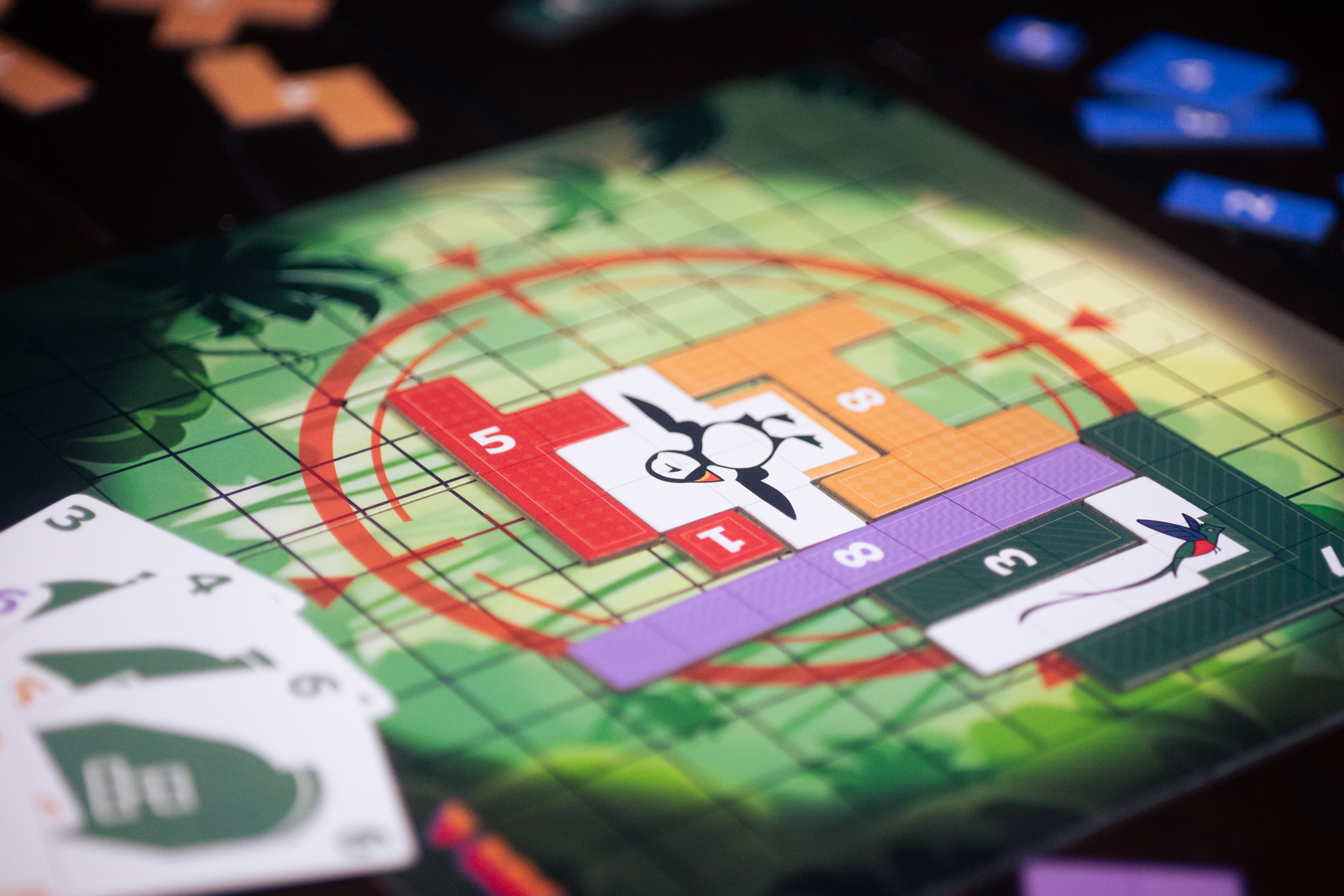
Alright! I’ll see you all next week. It’s hard to believe July’s almost over!




